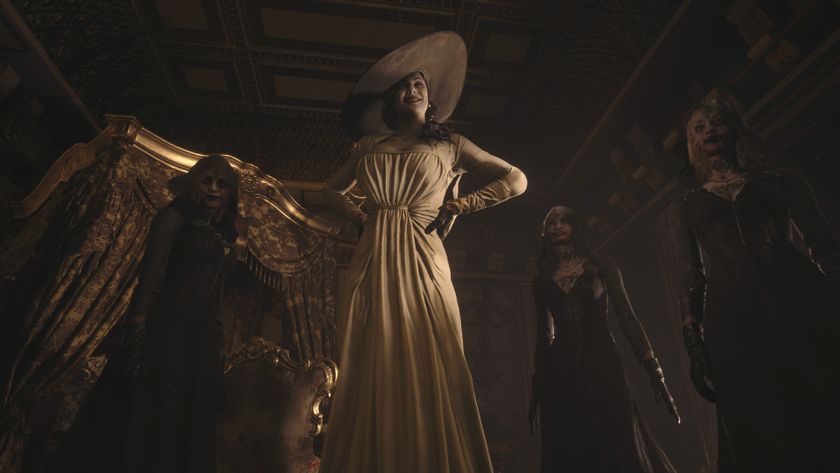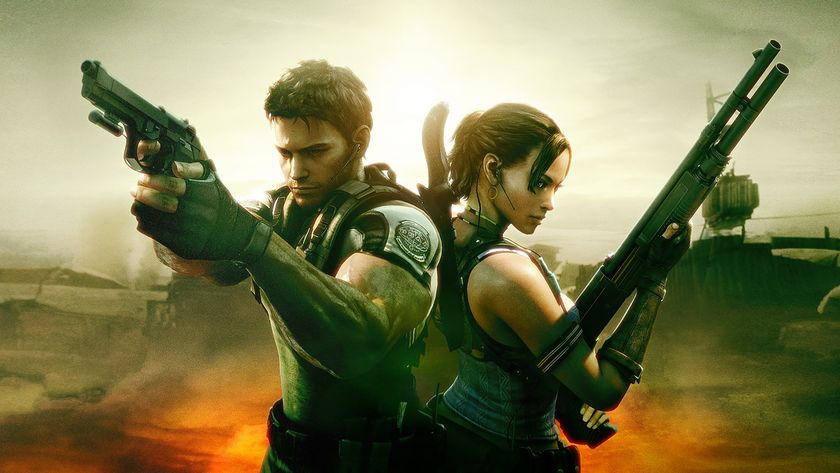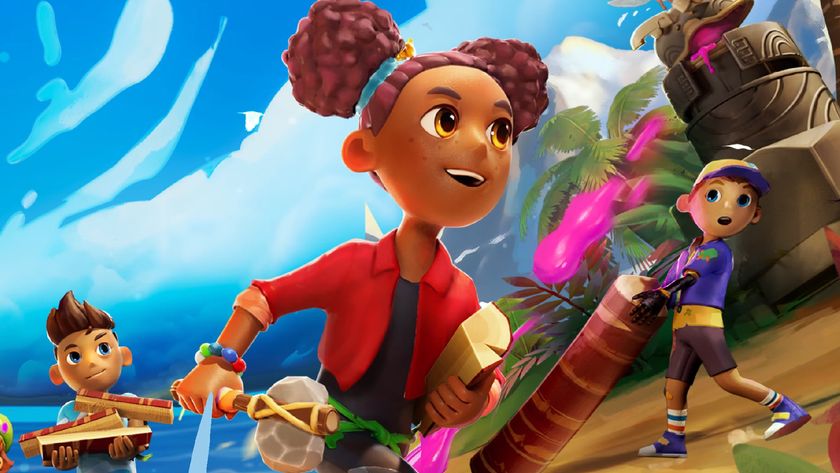7 movies that inspired Resident Evil 7 (and none of them are actually Resident Evil)
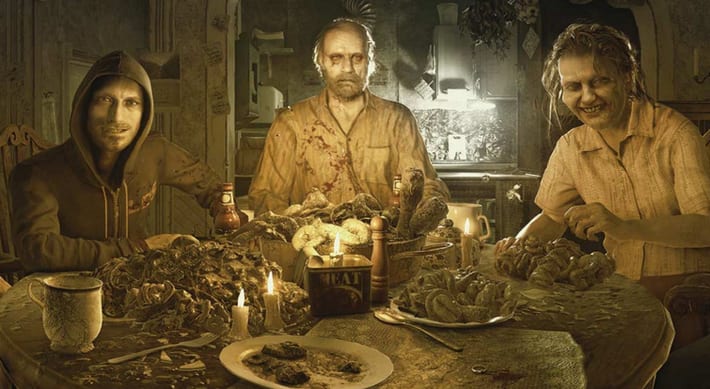
Resident Evil 7 is a revolutionary game. Gone are the Hollywood set-pieces, the action-heavy gameplay, the insta-fail button prompts and the steroid-pumped super soldiers capable of smashing rocks with their bare fists. Capcom stripped the franchise back to its roots making it a great place for new players to jump in without having to dedicate whole evenings studying the franchise’s intricate lore. It’s just you, a spooky house, a handful of bullets and a load of sludgy monsters with massive teeth. What more could you want?
Where it’s not so different from its predecessors, however, is from where it draws inspiration; movies. Lots and lots of horror movies. While early games in the franchise used the shambling zombie films of George A. Romero as a reference point, later entries looked to more action-orientated creature features to help get the old creative juices flowing. With Resident Evil 7, Capcom once again turned to cinema as a source of inspiration and I’ve decided to have a crawl back through the creepy old DVD collection and take a look at what helped shape one of the stand-out games of the year so far.
1. The Texas Chainsaw Massacre
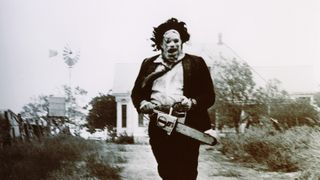
Best to get the obvious one out of the way first. Tobe Hooper’s seminal 1974 horror classic was created on a micro budget of $300,000 and completely re-wrote the rulebook of cinematic terror. Now considered one of the best American horror films ever made, The Texas Chainsaw Massacre features a family of murderous ex-slaughterhouse workers and a group of teenage travellers unlucky enough to chance upon their crumbling family home – and stands as the largest single influence on Resident Evil 7. From the sickly yellowed colour pallet, the American gothic seclusion, the idols made from bones and animal parts all the way to the decrepit family members who are wheeled around like vicarious, unsettling sentinels, it’s all in there. The Baker family dinner scene in the opening portion of the game was borrowed almost entirely from the film and is used to introduce you to the warped menaces you’d be charged with escaping.
But it is with Leatherface himself, the iconic child-like maniac responsible for the majority of the violence in The Texas Chainsaw Massacre that Capcom drew its greatest influence. As the travellers venture into the house his arrival is guaranteed, they are on his turf, and it is this upper-hand he uses to his advantage time and again. In Resident Evil 7, your first persistent menace is Jack Baker, the inhumanly-strong, seemingly unstoppable, wall-smashing patriarch of the Baker family. As he stalks you he calls out, dimly aware of your location and revelling with childish glee as you cower in the corner. His transformation to Leatherface is complete when, surrounded by the butchered remains of his victims, he fires up a chainsaw and you go head-to-head in a makeshift morgue.
2. The Blair Witch Project
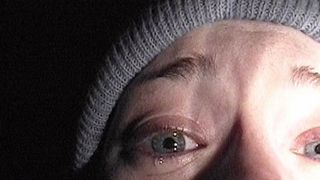
Resident Evil 7 isn’t the first in the series to be played in the first-person perspective. That (somewhat dubious) honour goes to 2000’s less-than-stellar light gun game Resident Evil Survivor, but it is the first non-spinoff to be played this way. By closing in the viewing angle, Capcom was able to restrict what the player can see, meaning it has more in common with the early game’s CCTV-style static camera, which never gave you a clear view of what was ahead of you. The first-person viewpoint feels like a fairer variation of this as you feel more in control of what you’re seeing while keeping you on edge about what lies around the next corner.
When The Blair Witch Project was released in 1999 it utilised a similar restriction of vision, all the action being captured on film by the actors themselves. It popularised the ‘found footage’ genre which films like Cloverfield, REC and Troll Hunter grew from, and provided inspiration for Resident Evil 7’s shift in viewpoint. Scattered throughout the game are videotapes filmed by other victims of the Baker family which give you a glimpse ahead at the horrors to come. It’s in these tapes we hear the regrets and fears of Mia, your missing girlfriend, a scene instantly recognisable by anyone who’s seen the torch lit, snotty-nosed confession of Heather from The Blair Witch Project. The point of this design choice is to reduce the number of steps between player/viewer and antagonist, keeping you closer to the action, which they both achieve to pant-wetting degrees of success.
3. Se7en
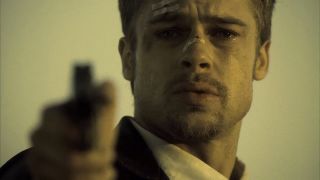
The Baker residence is not a welcoming place. Walls are crusted in grime and rust, wallpaper hangs in damp yellowing strips, fridges peel open, their liquefied contents dribbling out like decade-old apple sauce. Tables overflow with rotting food, insects make the walls shift and crawl and the bathtubs are filled with what looks like a combination of tar and Bovril. It’s gross, really gross, and builds a picture of the twisted lack of humanity that lies in wait. Se7en is the tale of two detectives on the hunt for a deranged serial killer named John Doe, who kills his victims ironically using one of the seven deadly sins as inspiration. As we don’t meet Doe until the last quarter of the film, it’s up to the set designers to help us understand his world a little better.
Sign up to the 12DOVE Newsletter
Weekly digests, tales from the communities you love, and more
While Seven and Resident Evil do not share a similar setting (Se7en is set in a sprawling rain-slicked city that looks a bit like New York and then all of a sudden L.A.), the set dressing of the film’s interiors has been a clear inspiration. In one scene, the Doe has tied an obese man at his kitchen table and forced him to eat spaghetti until his stomach tore apart (not one for the faint of heart). The victim’s kitchen is slicked with grease, yellowed newspaper cover the windows with pots and pans of vomit and god-knows what else dotted around the place. Later we meet the desiccated shell of another victim, tied to a bed for a year, his apartment left to wrack and ruin with only a forest of Magic Tree air-fresheners to keep people enquiring about the smell of decay. And then there’s the serial killer’s humble abode. Littered with iconography, filled with journals and newspaper clipping pinned to walls. Both game and film use environmental storytelling to put you on edge, and give you an idea of the horror you’re about to uncover.
4. Deliverance
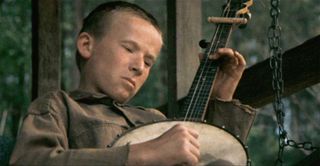
Deliverance is a film about getting lost, not just physically lost, like I wandered too deeply into this forest with my buddies and now we can’t find our way out, but being culturally isolated. In Deliverance, Jon Voight, Burt Reynolds and co. take a canoe trip into the dark heart of Northern Georgia only to be set upon by the banjo strumming, inbred locals. As the troupe wind their way along the river it slowly dawns on them that they have wandered into a part of America they not only don’t recognise or understand, but have absolutely no reference to. They are lost, they are being hunted, and nobody’s coming to help them.
Resident Evil 7 takes a similar approach to isolating the player. As it dawns on you that the Baker house is the centre of something unworldly, you’re presented with an early opportunity to raise the alarm. That opportunity is, brutally, stripped away and you’re left totally alone, aware others have befallen a similar fate. In the past, Resident Evil games have paired you up with a colleague, but this time you’re all on your own and wholly unequipped to tackle what you face. It’s this vulnerability and isolation and the dawning realisation that you’ve bitten off far more than you can chew which makes the game so compelling, and there’s no better example of realising you’ve bitten off more than you can chew than Ned Beatty’s character’s experience in Deliverance. Squeal piggy!
5. Winter’s Bone
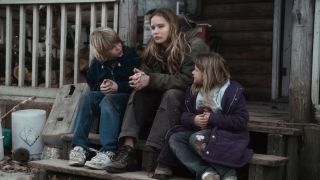
This may seem like an odd choice, but throughout Resident Evil 7 I was reminded of this film. Winter’s Bone is a 2010 thriller set in the poverty stricken community living in the Ozark Mountain in which a teenager named Ree Dolly (played by Jennifer Lawrence) attempts to tracks down her drug dealer father. Ree Dolly, who is seen as a bit of an outsider, is met with resistance and open hostility from her matriarchal family which rule the area. It’s not a horror film, there’s no haunted house and there’s no toothy tar-zombies to run away from, but it shares a major theme with Resident Evil 7: family.
During the film, Ree Dolly (that name gets stranger every time I write it) is forced to accept her family’s less than wholesome lifestyle and also the terrible secret it’s been hiding. In the end Lawrence’s character comes to an understanding with her family, in a sort of blood is thicker than water sense of the matter. Family, and the terrible secrets that bind families together is the theme at the very heart of Resident Evil 7. The Baker Family is bound by something far more… unusual… than the challenges faced by Ree Dolly, but the family bond, and how that bond is tested, acts as the pivotal theme of both film and game.
6. Ringu
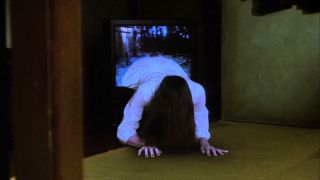
Ringu knows that kids are scary. Especially kids with dark secrets, terrifying powers and the ability to crawl out of static-y TVs and kill just by looking at you. The spooky long-haired Japanese kid has been a favourite of films and video games since its inception in 1998 (the motif was used in several instances before Ringu hit the cinema, but this was its introduction to a wider audience), and Resident Evil 7 wasn’t immune to its appeal (there’s a spooky girl in Resident Evil 7, she’s right there on the box art if you had any doubts). Ringu is the tale of a cursed videotape which, once watched, the viewer receives a phone call telling them they’ve got a week to live. When your time is up, you’re visited by a creepy ghost child who crawls out the TV and scares you to death. Literally. Sounds ridiculous, but it was enough to give me panic sweats, tooth-grinding anxiety and a tendency to drape a hoodie over my TV when I go to sleep.
Where Ringu differs from the tidal wave of teen horror films that flooded the market in the mid to late ‘90s (thanks a lot Scream) is that it relied on brooding atmosphere, a chilling folk legend back-story and a slowly unfolding narrative as opposed to gore-splattered jump scares. While Resident Evil 7 still relies somewhat on the occasional monster popping out of nowhere and drenching the screen in blood, it’s far more comfortable with letting the oppressive atmosphere it works so hard to establish slowly chisel away at your nerves, so much so that it becomes a relief when whatever’s been stalking you finally appears (and chews your face off).
7. Saw
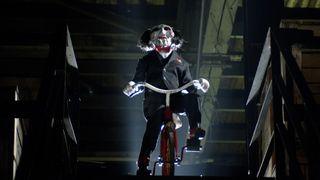
About two thirds of the way into the game you’ll square up with Lucas, the Baker’s creatively deranged son. Lucas clearly didn’t have anyone to play Lego with when he was a child and, as such, would rather toy with you in one of his devious creations than just hit you with a mallet like his old man. Your first encounter with him is through one of the found tapes. This recounts the plight of an unnamed earlier victim tasked with securing his own release by solving a sadistic puzzle involving a drum of oil, an evil clown automaton and a gas cooker. It does not go well. Later you revisit the trap, and others set by Lucas, with the knowledge garnered from this tape, which gives you more of a fighting chance than his previous victims.
Saw, and its seven sequels, featured similar trap environments which forced captives to fathom a solution to their predicament and undertake a (usually gruesome) task which would result in their freedom. While Capcom had to make the challenges in Lucas’s section slightly more intricate than just 'Press X to pull out your eye to retrieve the key surgically implanted behind it', it’s clear that the idea for putting victims into a room challenge environment and seeing if they can fathom their way out was lifted from the Saw franchise.
Richard is a freelance games journalist based in Derby, UK. He's currently working at Virgin Media, but writes about games in his spare time.

